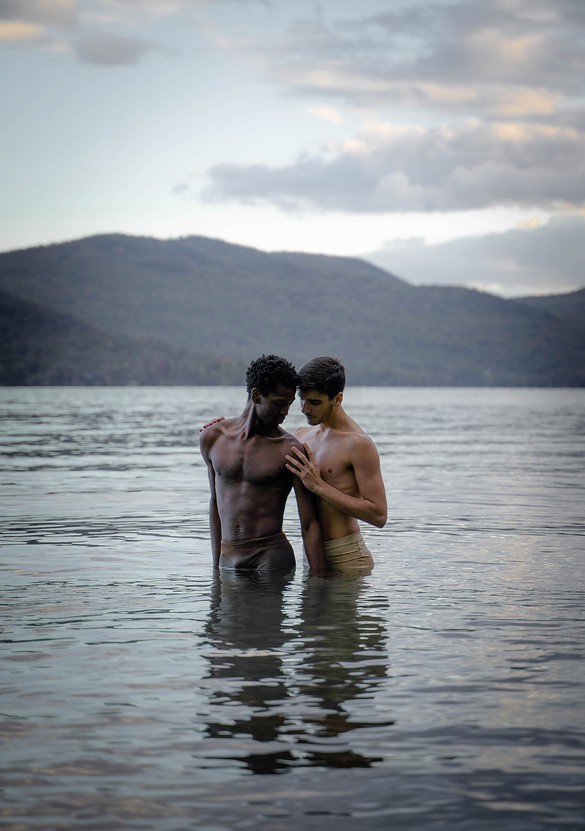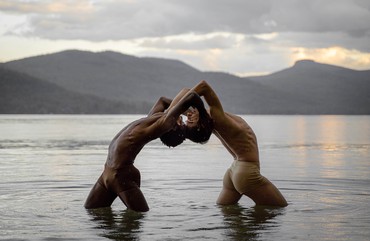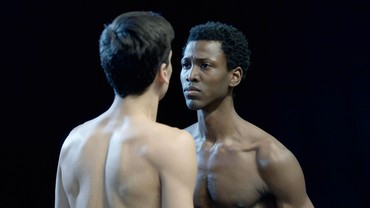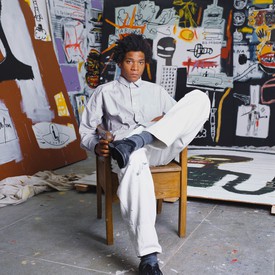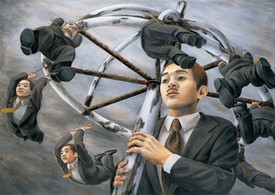
Clare Croft is a dance theorist, historian, dramaturge, curator, and associate professor of American culture at the University of Michigan. She is the author of Dancers as Diplomats: American Choreography in Cultural Exchange; the editor and curator of the anthology and website Queer Dance: Meanings and Makings; and the producing curator of the EXPLODE Queer Dance Festival.
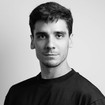
Originally from Brazil, João Menegussi began his professional dance studies at Tanz Akademie Zürich in 2012. Menegussi joined the American Ballet Theatre Studio Company in 2016, becoming a member of the corps de ballet in 2018. His repertoire includes the Spanish Dance in Alexei Ratmansky’s Nutcracker and a featured role in Deuce Coupe.
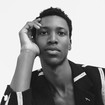
Calvin Royal III began his training at the Pinellas County Center for the Arts at Gibbs High School in St. Petersburg, Florida. In 2006, he was awarded the Ethan Stiefel Scholarship to attend American Ballet Theatre’s Jacqueline Kennedy Onassis School, and in 2020 was appointed Principal Dancer. He has been named the 2020/21 artist-in-residence at Vail Dance Festival.

Christopher Rudd is a Jamaican-born dance maker and 2019 Guggenheim Choreography Fellow. He began his training with Armour Dance Theatre and has performed with the Carolina Ballet, Les Grands Ballets Canadiens, and Cirque du Soleil. Rudd has choreographed for the Alvin Ailey School and Harlem Stage’s E-Moves, among other companies. In 2015, he founded RudduR Dance.
I started dancing at Armour Dance Theatre, a classical ballet school. I love ballet with all of me. Contemporary ballet feels better in my body; rather than forcing steps, it takes the foundation of ballet and allows for organic movement. When I joined Cirque du Soleil, my imagination for movement changed. I started looking up. Not only are there elements of acrobatics and circus practices in Touché, but the balletic conventions are also overturned: in the classical tradition, men don’t partner men and men don’t get partnered. Being able to take the time to focus on that dynamic—mutual partnering—within the choreography was really important to this work.
—Christopher Rudd
At a moment when we couldn’t touch each other due to covid, seeing something dealing with the importance of touch was potent. Some of the touches are more obviously coded as sexual or sensual, when the dancers’ hands move toward each other’s hips and so forth, but by the end, every touch feels powerful and coded, even, in the final moment, holding each other’s ankles. I don’t think of touching somebody’s ankle as a super intimate thing. Yet over the course of the work, the choreography teaches us how to experience touch through watching others’ bodies, which resonates deeply in the context of the pandemic. And for those of us who are queer and gay and lesbian and trans folks, we don’t get to see people touch in the way we yearn for in public all that often. To have this explicitly homosexual relationship—very intimate, very sensual, very sexual—beaming into my home was incredibly moving.
—Clare Croft
In the process of creating the characters in this piece, we each referenced our own stories. What I like about the evolution of the piece are the moments when something from the beginning is mirrored later. Although we were on our individual journeys, there are parallels to what each of us was going through; from the beginning to end, for me at least, it’s like an unveiling. The first half has a sort of tension and shame and loathing, expressed through an internal approach to the movement. And as the piece evolves, we grow in ourselves and we grow in the choreography. Those layers, including the clothing, are slowly stripped back to reveal what’s beneath. By the second half, we may not necessarily be 100 percent free or safe, but we’ve been able to expose ourselves and be bare with each other in the bigger context of the world that these characters are residing in.
—Calvin Royal III
This was the first time I’ve ever worked with an intimacy director. It was an experience from another world. When we’re in the studio, we’re basically naked, in tights and leotards—there’s a feeling of exposure. Bringing an intimacy director into the studio changes the game, because that person is there to watch after us and make sure we feel comfortable in the process of creation. In our field, we’re trained not to speak and to listen only. We never have a voice. I say that with full confidence because it is what it is. I can’t lie about this. Having Sarah Lozoff there gave us a voice. She gave us the opportunity to express how we feel about this, what we think of it, and tell our story.
—João Menegussi
Touché will be performed as part of American Ballet Theatre’s Fall Season at David H. Koch Theater, New York, on October 27 and 30, 2021
